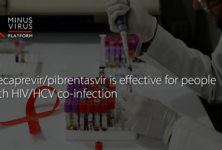Drug use generally and chemsex more specifically are perceived to be common and normalised behaviours among gay men involved in those scenes in London, but this perception is contradicted by survey data. As social norms influence health-related behaviour, health promotion interventions should challenge the idea that drug use and chemsex are widespread, argue authors from Sigma Research in the International Journal of Drug Policy.
Survey data show that only a minority of gay men use drugs in a sexual context, but that the practice is more common in some cities and social groups. For example, data from 519 gay men attending six sexual health clinics throughout England in 2013 and 2014 has recently been published by researchers from Public Health England in Sexually Transmitted Infections. The men were asked whether, in the past three months, they had been under the influence of recreational drugs with a sexual partner.
Twelve per cent said they had, with the most commonly reported drugs being mephedrone (10%), GHB/GBL (7%) and cannabis (7%).
Similarly, data from Sigma Research’s 2014 Gay Men’s Sex Survey show that among men living in England:
- 2% had used crystal meth in the past month, and 8% had ever used it
- 5% had used mephedrone in the past month, and 17% had ever used it
- 3% had used GHB or GBL in the past month, and 13% had ever used these substances
- 2% had injected drugs (other than anabolic steroids and prescribed medicines) in the past year, and 3% had ever done so.
However these behaviours are much more common among men living in London, Brighton and Manchester, as well as among men with diagnosed HIV. For example, in the whole sample of men living in England, 7% had used any of the three chemsex drugs mentioned above in the last month. The figure was 14% for all men living in London, 22% for all men living with diagnosed HIV in England, and 33% for men living with diagnosed HIV in London. Injecting drugs in the past year was reported by 3% of all men living in London, 11% of all men living with diagnosed HIV in England, and 14% of men living with diagnosed HIV in London.
Moreover, individuals may choose to socialise and meet partners in social and sexual networks where these behaviours are even more common, giving men the impression that chemsex is a typical practice of most gay men.
Several theories of health behaviour and behaviour change suggest that social norms influence people’s health decisions and behaviour. Social norms have been defined as social attitudes of approval or disapproval that specify what ought and ought not to be done. The psychologist Alan Berkowitz argues that an individual’s false perceptions about how members of their social groups think and act can lead to an overestimation of certain behaviours and therefore encourage individuals to engage in these behaviours themselves. According to this theory, talking up risk behaviours becomes a self-fulfilling prophecy.
In 2013 and 2014, Sigma Research conducted in-depth interviews with 30 gay men living in south London who practiced chemsex, as well as focus group discussions with a further 12 gay men living in the area who did not necessarily engage in chemsex. Focus groups can be particularly useful for highlighting community perceptions, social norms and expectations. (Other findings from the study have already been reported by aidsmap.com).
Most men taking part in the research felt that drug use was ubiquitous among gay men. Men using dating apps, saunas and nightclubs could see signs of drugs being used or sold. One man said:
“Rampant. It’s just everywhere. I mean, even if you go to – you think – no, it’s everywhere. I mean, I can’t think of anywhere where I’ve not seen drugs being taken. Yeah, that’s the reality.”
Chemsex more specifically was also thought to be commonplace. Just under a third of interviewees said they believed drug use and sex to be inextricable. Others claimed that drug use in social settings like clubs will usually lead to sex or that they now used drugs exclusively to facilitate sex.
Men who used nightclubs narrated a progression of events that involved using drugs in clubs but moving to private homes at the end of the night to engage in chemsex. Other men bypassed the clubs and went directly to sex parties, arranged on dating apps.
“And it started to become, ‘We’re paying twenty quid to get into a place. Why not have drugs at home, with a sex party?’ You know, this is the alternative; and we’ve got apps that can help to facilitate that need, and make that happen… People stay long hours being very bored in clubs and bars, sometimes, and all they wanted was just a shag.”
Private homes were seen as easier and safer spaces to engage in chemsex. Use of mobile apps was widespread among the study participants, both to arrange sexual encounters and to get hold of drugs.
Chemsex was felt to be different from sober sex, both in terms of what was permitted and what was expected. Certain acts were felt to be more acceptable in a context of chemsex. Some men described a culture of men pushing themselves to their sexual and drug-use limits. Other men spoke about a shifting of standards during chemsex. They themselves, or men that they knew, would exchange drugs for sex with a younger/more attractive man, or exchange sex with an older/less attractive man for drugs.
Moreover, many men drew upon a discourse around the disinhibiting effects of drugs to help rationalise their actions, particularly in relation to risky or esoteric sexual practices. Phrases such as ‘being carried away with the moment’, ‘not caring as much’, and ‘feeling more reckless’ were used throughout the interviews in a way that allowed the men to make sense of their experience.
The researchers comment the media often presents chemsex as a causative factor in HIV transmission risk behaviour when in fact there may be a range of other factors that influence risky sex, but which are harder to articulate. Moreover, media reports tend to turn a blind eye to the variety of lifestyles and experiences of gay men, while stigmatising those men who do engage in chemsex.
“The perception that most gay men in South London are participating in chemsex contradicts survey data measuring its actual prevalence,” the researchers say. They argue that health promotion interventions should challenge social norms relating to drug use and chemsex.
“Social norms interventions focus on correcting false consensus by providing believable information on actual behaviours (what members of a group actually do). A social norms intervention in London could potentially attend to misperceptions regarding the ubiquity of chemsex,” they say.
Moreover, interventions should try to prevent further stigmatisation of men involved in chemsex, as it is unlikely to help men access support services.
By Roger Pebody
References
Ahmed KA et al. Social norms related to combining drugs and sex (“chemsex”) among gay men in South London. International Journal of Drug Policy 38: 29–35, 2016.
Mohammed H et al. Sexualised drug use in people attending sexual health clinics in England. Sexually Transmitted Infections 92: 454, 2016.
Hickson F et al. State of Play: findings from the England Gay Men’s Sex Survey 2014. Sigma Research, 2016. (Full report freely available).


 ПОИСК ПО САЙТУ
ПОИСК ПО САЙТУ  поиск по ресурсному центру
поиск по ресурсному центру 



